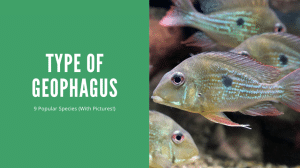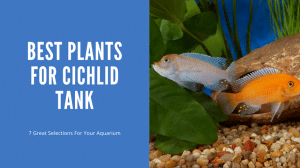Thank you for visiting! By the way… any links on this page that lead to products on Amazon and other stores/partners are affiliate links Aquarium Store Depot earns a commission if you make a purchase.
Want a shark but can’t set up an entire saltwater aquarium? The bala shark has been a popular freshwater fish species for decades. With a long, silver torpedo-shaped body and accented black fins, these fish confidently patrol the aquarium like a type of freshwater shark.
While these fish are not true sharks, they grow to some impressive sizes. It wasn’t until lately that hobbyists discovered the true care requirements that bala sharks have in the aquarium setting. If you’re able to properly house one of these monster freshwater fish, then you’ll need to consider some of the best tank mates.
Here are some of the best bala shark tank mates and their care requirements!
Key Takeaways
- Bala sharks are large freshwater fish that can live with a variety of other fish.
- These unique fish are named after their iridescent silver torpedo-shaped bodies with jet-black fins.
- The best bala shark tank mates are ones that are moderately sized and active. Examples include Angelfish, Severums, and Tiger barbs.
- Sadly, natural bala shark populations are decreasing, and they are rarely bred in the aquarium hobby.
The 15 Best Bala Shark Tank Mates
Such a large fish needs special consideration when choosing tank mates. Bala shark tank mates should be big, active, and able to withstand semi-aggressive and sometimes predatory behavior, especially during feeding times. All recommended minimum tank sizes have been adjusted to accommodate a school of bala sharks and other tank mates.
Here are some of the best tank mates available for bala sharks and their own care requirements! Note the minimum tank size stated here is for keeping both species of fish together.
1. Other Bala Sharks
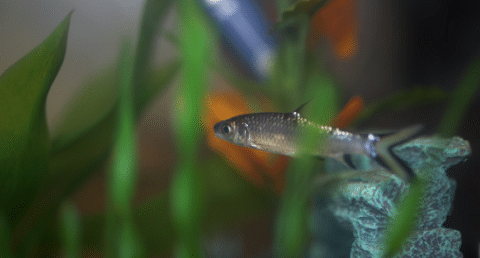
- Scientific Name: Balantiocheilus melanopterus
- Adult Size: 1-2 feet
- pH: 6.5-7.5
- Water Temperature: 72-82° F
- Minimum Tank Size: 125 gallons
The best tank mates for bala sharks are other bala sharks! You read that right, these fish do best when they’re kept with their own species.
While widely available, bala sharks actually come from pretty unique ecosystems where other freshwater aquarium fish aren’t regularly collected. Instead, other monster fish, like the iridescent shark (Pangasianodon hypophthalmus), are collected and kept in extremely large systems or public aquariums. This can make it difficult to pair bala sharks with other endemic species.
Bala sharks also enjoy the company of each other. They can be shy and skittish when the only shark in the tank, and being in the company of others increases their confidence. Keep in mind that an overly bold bala shark can become semi-aggressive and might even try to eat smaller fish.
2. Gouramis
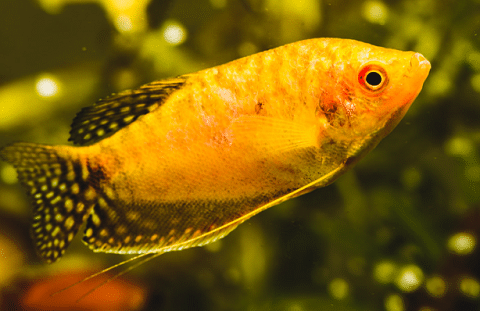
- Scientific Name: Helostomatidae family/Osphronemidae family
- Adult Size: 6-20 inches
- pH: 6.5-7.5
- Water Temperature: 72-82° F
- Minimum Tank Size: 125-250 gallons
Dwarf gouramis (Trichogaster lalius) are some of the most popular fish to keep in community tanks. We’re going to need something a little bigger than a dwarf gourami, though.
There are many species of gourami, some of which grow to extreme sizes, making them a great bala shark tank mate! Two of these species are kissing gouramis and giant gouramis.
Kissing gouramis (Helostoma temminckii) are not usually recommended for community fish tanks but make suitable tank mates for bala sharks. Kissing gouramis can be somewhat territorial, so it’s best to keep your bala sharks in decently sized schools and provide plenty of hiding spots.
The giant gourami (Osphronemus goramy) is a huge fish that requires at least 250 gallons. While these fish are often slow and sluggish and unlikely to chase after more active swimmers, like the bala shark, they may defend their territory if needed. Because of this, it’s best to keep the bala sharks in larger numbers and with plenty of rocks and decorations.
3. Angelfish
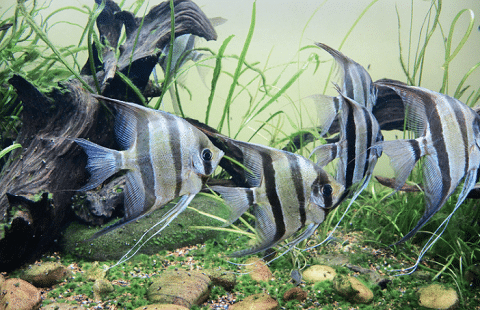
- Scientific Name: Pterophyllum spp.
- Adult Size: 4-6 inches
- pH: 6.0-7.5
- Water Temperature: 75-82° F
- Minimum Tank Size: 125 gallons
Angelfish are a very popular option as bala shark tank mates. Though bala sharks are active swimmers and angelfish are not, these two species seem to balance each other out. As a result, the angelfish and bala sharks will typically start to float and swim together in the middle of the water column.
There are many species of angelfish available. The common Pterophyllum scalare can reach a large enough size to complement a bala’s length. These fish come in nearly every color combination, which can accent the shine of the sharks. If you’re looking for a real fishkeeping challenge, then you may opt for the expensive and difficult-to-keep altum angel (Pterophyllum altum), which also grow to larger sizes.
Angelfish do best when kept in small groups of the same species. If planning to keep larger species of angel, then it’s recommended to have at least a 150 gallon aquarium.
4. Clown Loach
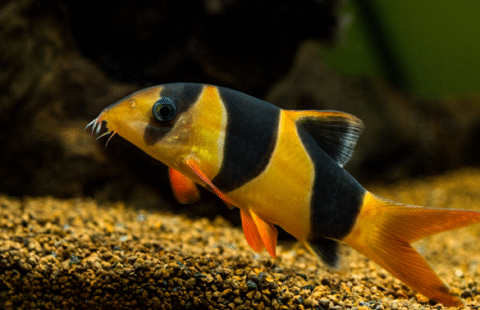
- Scientific Name: Chromobotia macracantha
- Adult Size: 1 foot
- pH: 6.0-7.5
- Water Temperature: 72-82° F
- Minimum Tank Size: 125 gallons
One of the most common tank mates for bala sharks is the clown loach. For decades, these fish were kept in overly small community tanks where they couldn’t thrive. While care requirement understanding has changed for these two different species, it’s still agreed that they make a great tank mate pairing.
Clown loaches have very similar temperaments to bala sharks and can grow to relatively the same size. In addition, clown loaches are schooling fish which will help shyer bala sharks come out to the front of the tank.
While clown loaches might seem like smaller fish, they can still grow to be a foot in length. They originate from fast-flowing rivers and need good water circulation, but not so much that your bala shark school gets pushed around the aquarium.
5. Blood Parrot Cichlid
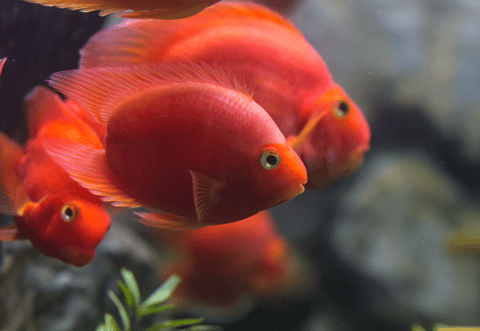
- Scientific Name: Cichlidae hybrid
- Adult Size: 6-10 inches
- pH: 6.5-7.5
- Water Temperature: 75-82° F
- Minimum Tank Size: 125 gallons
Blood parrots are a hybrid type of cichlid. This means that they can sometimes display aggressive behavior towards overly active or small fish; an especially large blood parrot cichlid may also try to eat smaller fish. Because of this, it’s recommended to only keep appropriately sized bala sharks with these fish.
Otherwise, a blood parrot cichlid will bring a ton of color to a bala shark tank. They are not overly active swimmers, which can help calm shy and skittish bala sharks.
It should be also noted that, because they’re hybrids, blood parrot size can greatly vary. It’s better to go with a larger tank than necessary, not only to allow for potential size and bioload but also to safely keep multiple parrots with multiple sharks.
6. Severum
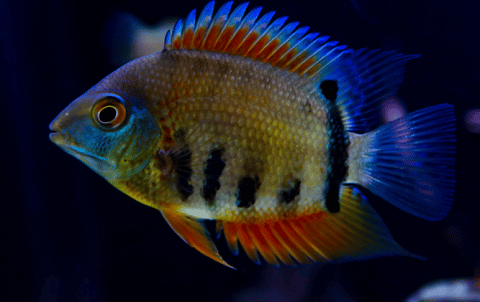
- Scientific Name: Heros severus
- Adult Size: 6-10 inches
- pH: 6.0-7.5
- Water Temperature: 72-82° F
- Minimum Tank Size: 125 gallons
A true species of cichlid, severums are one of the most popular fish to keep in the freshwater aquarium and make good tank mates for bala sharks. Severums are a relatively peaceful species of South American cichlid. They are much more forgiving of other fish than most cichlids.
However, multiple severums do not do well when placed together in the same tank, especially if the aquarium is small. In certain settings, breeding pairs of severums can be safely kept. Bala sharks are probably too active for a pair of severums aggressively defending their nest and territory, though. For this reason, we only recommend keeping one severum alongside bala sharks.
7. Geophagus Cichlids
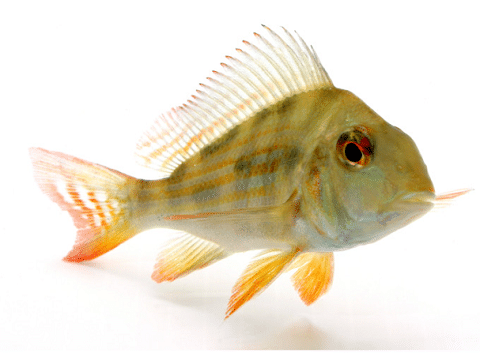
- Scientific Name: Geophagus spp.
- Adult Size: 6-8 inches
- pH: 5.5-7.5
- Water Temperature: 72-82° F
- Minimum Tank Size: 125 gallons
Another South American cichlid, geophagus are natural-looking fish that can vary in appearance. These fish are mostly a mixture of silvers, blues, and greens, with males being more colorful and ornate than females.
Along with appearance, aggression can vary with geophagus species. It is believed that Geophagus altifrons is one of the least aggressive species available. These fish enjoy their own species and being in schools of at least 6 or more, but some hobbyists have kept multiple species together in the same tank as long as space allows.
8. Tinfoil Barbs
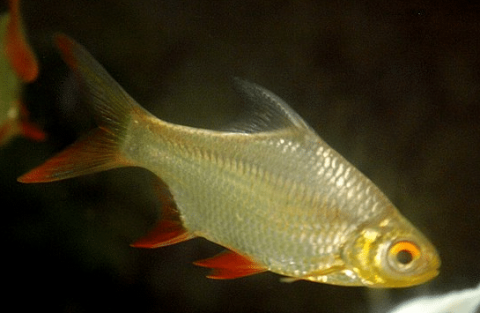
- Scientific Name: Barbonymus schwanefeldii
- Adult Size: 1-1.5 feet
- pH: 6.5-7.0
- Water Temperature: 72-82° F
- Minimum Tank Size: 150 gallons
Tinfoil barbs are very large barbs from Southeast Asia. These fish are not commonly seen available in the normal freshwater fish hobby but are a favorite among monster fishkeepers. These fish grow to extreme sizes as a barb species, and feature a simple silver color with black and red angular fins.
Tinfoil barbs are schooling fish and need to be kept in groups of at least 6 or more. Because bala sharks are also schoolers and share a similar demeanor, an especially large tank is needed. If keeping only these two species, then a 150 gallon is needed. Keeping different species would require a several hundred gallon system.
9. Tiger Barbs
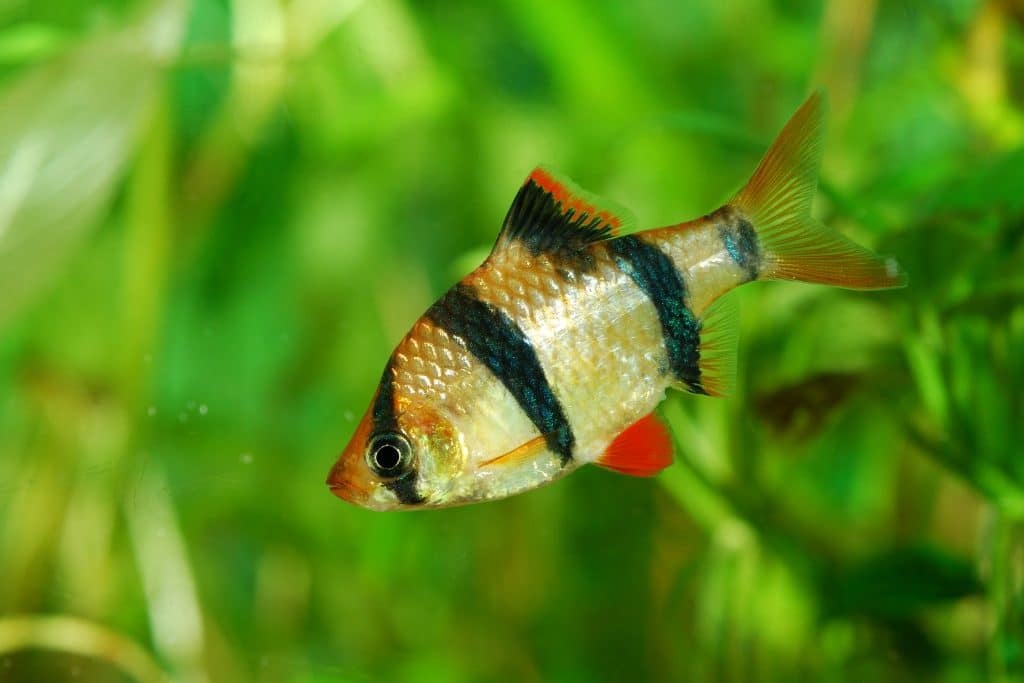
- Scientific Name: Puntigrus tetrazona
- Adult Size: 2-4 inches
- pH: 6.0-7.0
- Water Temperature: 72-82° F
- Minimum Tank Size: 125 gallons
In addition to the clown loach and bala shark pairing, the tiger barb and bala shark aquarium setup was inescapable for years. Tiger barbs are a very popular community tank shoaling fish and do best when kept in groups of at least 6 or more. Since bala sharks need a large aquarium, hobbyists can easily fit dozens of barbs in a 125 gallon system while still allowing for other species as well.
It should be noted that tiger barbs can be especially nippy and might try to chase and harass slower-moving fish. For the most part, bala sharks should be able to outpower and navigate around, especially feisty barbs, but additional protection through plants and structures will help keep aggression down.
10. Boesemani Rainbowfish
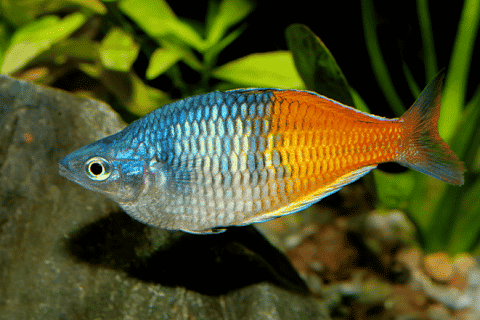
- Scientific Name: Melanotaenia boesemani
- Adult Size: 3-5 inches
- pH: 7.0-8.0
- Water Temperature: 72-82° F
- Minimum Tank Size: 125 gallons
Bosemani rainbowfish are very different in comparison to bala sharks by way of appearance, natural habitat, and behavior, but this unusual pairing seems to work. In general, bosemani are a larger species of tropical fish that fills an aquarium with bright colors and movement. This is in contrast to slow but steady iridescent bala sharks.
There is one consideration that needs to be taken when keeping bosemani rainbowfish as tank mates, though, and that is that they enjoy slightly harder and more basic water parameters. As long as both the bala sharks and bosemani rainbows have been kept in standard aquarium water conditions, then there should be no need for acclimation. You can also check out Emerald Rainbowfish as another option
11. Plecos

- Scientific Name: Hypostomus plecostomus
- Adult Size: 1-2 feet
- pH: 6.5-7.5
- Water Temperature: 75-82° F
- Minimum Tank Size: 150 gallons
We don’t usually recommend plecos as any tank mate option, but they do well in a large bala shark setup. Like bala sharks, common plecos have been long misunderstood fish regarding their behaviors and potential adult size. Plecos are huge fish that create a lot of waste! They can also easily injure and kill smaller fish by trying to suck the slime coat off their body.
For this reason, only one common pleco is recommended for a 150 gallon aquarium setup. While particularly aggressive plecos may still try to suck on the sides of bala sharks, balas will generally be faster and better protected in a school setting. Mid-sized plecos can also be considered.
12. Silver Dollars

- Scientific Name: Metynnis argenteus
- Adult Size: 6 inches
- pH: 5.0-7.0
- Water Temperature: 72-82° F
- Minimum Tank Size: 125 gallons
Though many species are regarded as a silver dollar, Metynnis argenteus is one of the most commonly available. Silver dollars are a comparable fish to the aforementioned tinfoil barb, though much, much smaller, and more manageable. These fish are pearlescent silver with some individuals showing hints of red on their anal fin.
Silver dollars are active schooling fish that will complement the same swimming patterns as bala sharks. Though only 6 inches wide, they can start to take up a decent amount of space as they grow vertically.
It should be noted that silver dollars are regularly kept in more acidic water parameters, so some acclimation might be necessary to keep them with balas.
13. Dennison Barbs

- Scientific Name: Sahyadria denisonii
- Adult Size: 4-6 inches
- pH: 6.5-8.0
- Water Temperature: 60-80° F
- Minimum Tank Size: 125 gallons
Dennison barbs are very popular tank mates for a variety of large fish species. They are colorful, active, and get along with most other fish. Unfortunately, these fish originate from very particular ecosystems throughout India, and their numbers are dwindling. All efforts should be made to replicate their natural settings in the home aquarium, including a high rate of water flow.
Otherwise, Dennison barbs thrive in groups of at least 6 or more. They are moderately active swimmers and can become slightly aggressive during feeding times. While they should be completely compatible with bala sharks, some care should be taken to ensure your sharks get enough to eat.
14. Pictus Catfish

- Scientific Name: Pimelodus pictus
- Adult Size: 3-6 inches
- pH: 6.5-7.5
- Water Temperature: 75-82° F
- Minimum Tank Size: 125 gallons
If you’re not looking for a bottom-dwelling fish as big as the common pleco, then the pictus catfish might offer something smaller and more eye-catching. These fish are silvery-white with assorted black spots across their bodies and fins. They also feature three sets of barbels.
The pictus catfish is one of the most ideal tank mates for a bala shark aquarium as they are largely nocturnal, swim at a different water column level, and complement the natural colors of the sharks. They also stay much smaller than other similar catfish, though they will need to be kept in small groups of at least 3 or more.
15. Giant Danios

- Scientific Name: Devario aequipinnatus
- Adult Size: 3-5 inches
- pH: 6.0-7.0
- Water Temperature: 72-82° F
- Minimum Tank Size: 150 gallons
The giant danio is becoming an ever-increasing popular fish in the aquarium hobby. They should not be confused with the readily available zebra danio (Danio rerio) as these fish require tropical temperatures and a larger tank.
That being said, giant danios are still very active schooling fish that can easily overwhelm smaller fish. Unlike zebra danios, they swim toward the middle of the water column, where bala sharks also prefer. To make this pairing work, the danios should be overall smaller and in a smaller group size than the sharks.
Aquatic Animals To Avoid
Though bala sharks might be afraid of their own shadow, there are a few fish and invertebrates they won’t be compatible with. Even though bala sharks are relatively hardy fish, they do have some special considerations.
1. Shrimp
Freshwater aquarium shrimp are a great addition to small tanks and aquascapes. Peaceful, full of personality, and colorful. Many varieties are available.
Shrimp are great cleanup crew members and can bring color and life to the bottom of the aquarium. Sadly, they are not good tank mates for bala sharks and will be easily eaten instead.
2. Small Snails
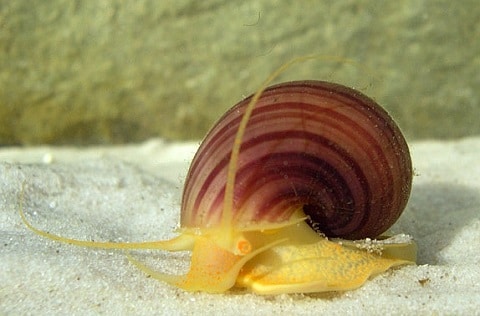
For the most part, bala sharks won’t eat mature snails. However, they might be tempted to eat a snail that is smaller than their mouth. For this reason, only large, full-grown snails should be kept as tank mates for bala sharks.
3. Small Fish
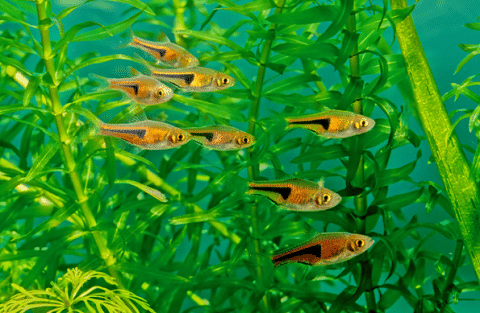
For the same reasons, bala sharks should not be kept with fish that are smaller than their mouth. While bala sharks are not overtly aggressive fish, they will not hesitate to try to eat anything that they can.
4. Aggressive fish
Again, bala sharks are not overly aggressive and they will be harassed and outcompeted by a larger, more aggressive, and more active tank mate. These fish are naturally shy and will not defend themselves if they are attacked by another fish.
Their Care Requirements
While we talked about possible tank mates, we also need to go over the intense requirements of bala sharks. For a long time, bala sharks have been kept in relatively small aquariums due to their unassuming juvenile size and striking appearance. The truth is that bala sharks can grow to be 1-2 feet long!
The bala shark (Balantiocheilus melanopterus) is a slender freshwater fish with pointed fins that resemble those of a marine shark. They have been documented in the Mekong River basin, as well as throughout the Malay Peninsula, Sumatra, and Borneo. Unfortunately, populations are dwindling in their natural habitat.
As of yet, bala sharks have not been, or are very rarely, bred in the aquarium setting. This means that wild-caught individuals need to be preserved in aquariums that fit their needs. Keep in mind that bala sharks are schooling fish and do best in groups of at least 3 or more. Because of this and their mature size, bala sharks require at least a 125 gallon aquarium, with a longer footprint being better than a tall one.
Want to learn more about their requirements in detail. Check out our care guide here.
FAQs
Can bala sharks be kept alone?
Bala sharks are big freshwater aquarium fish and it might be tempting to keep one bala shark in a 29 gallon tank instead of an entire school in a 125 gallon tank. These aquarium fish cannot and should not be kept alone.
These fish benefit from being in a group with others as they are naturally shy and reclusive. Also, never try to keep a fish in a tank that is too small with plans of eventually upgrading!
Are they aggressive?
Bala sharks were wrongly labeled as aggressive when they entered the aquarium hobby. These are relatively peaceful fish that might only mistakingly show signs of aggression if kept with small fish and invertebrates. Otherwise, they are often outcompeted by other species.
What’s the best temperature for them?
Bala sharks are tropical fish that need a constant water temperature between 72 to 82° F.
Final Thoughts
The art of keeping bala sharks has long been misunderstood. These are relatively peaceful fish that grow to large sizes and therefore, need a large aquarium setup. That being said, they can comfortably be kept with a variety of other freshwater fish as long as they don’t fit inside your shark’s mouth and aren’t overly active.
- About the Author
- Latest Posts
I’m thrilled that you found Aquarium Store Depot! Here you’ll find information on fish, aquariums, and all things aquatics related. I’m a hobbyist (being doing this since I was 11) and here to help other hobbyists thrive with their aquariums! I adhere to a high quality Editorial Process and Review products with real life field usage and practical analysis.





